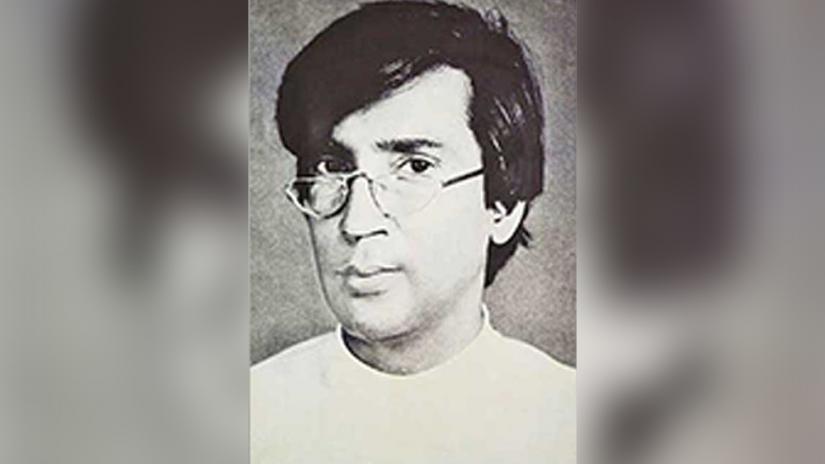 Rashid Choudhury, a prominent Bangladeshi artist, has made history posthumously as his artwork, an untitled tapestry, was displayed at the Metropolitan Museum of Art in New York City, in the United States of America.
Rashid Choudhury, a prominent Bangladeshi artist, has made history posthumously as his artwork, an untitled tapestry, was displayed at the Metropolitan Museum of Art in New York City, in the United States of America.
The museum, popularly known as The Met, is regarded as one of the largest and finest museums in the world. According to the website of the Metropolitan Museum of Art, the tapestry was presented to the museum by Nadia and Rajeeb Samdani, founders of Samdani Art Foundation and is considered the first Bangladeshi modern artwork by a visual artist to join the museum's collection.
This major addition is quite significant to the museum's reserve of all modern and contemporary artworks as it expands the department's sphere by including important art from South Asia, Shanay Jhaveri, assistant curator of the Department of Modern and Contemporary Art said in an article published at the museum's website.
The tapestry is described to weave an abstract and multifaceted array of earth tones, consisting hints of orange and traces of light blue with a captivating dynamism to its central component.
The art portrays a remarkable symphony of elongated and fragmented vertical shapes, which is evocative of several bodies engaged in a dance.
This artwork is exemplary of the visual language that Rashid Choudhury used in his artistry, which makes his creations particularly modernist and original that is also placed in a particular historical and cultural framework.
Rashid Choudhury was born in Faridpur district (now Rajbari) of Bangladesh in 1932 before the Partition, and grew up in the company of Hindu and Muslim cultures as well many other ethnic and folk traditions of rural Bengal.
He completed his initial education at the Government Art Institute of Dhaka, and began his artistic pursuit as a painter. Choudhury then went to Spain and France, in 1956 and 1960 respectively, to pursue further training in art.
He was appointed as the first teacher of the department of Oriental arts at the Dhaka Art Institute after he returned to Bangladesh in 1965. Later, he and his wife moved to Chittagong, where he joined the department of fine arts in Chittagong University. He came back to Dhaka in 1981, and resided there until he died of cancer in 1986 at an early age of 54.
The untitled tapestry is displayed at The Met museum next to two other works of the same series. While observing the three tapestries, one can detect the causal uniformity and formalism in Choudhury's mastery.
A few defining features of his tapestry are that his works are inspired from the traditional iconography of various Hindu gods and goddesses, and the other is his use of amazing color palettes that mesh together to give a splendid sense of animation and vibrancy.
In his lifetime, Rashid Choudhury devoted himself to the modern art movement of Bangladesh by working as a teacher and artist.
 Lifestyle
Lifestyle
41362 hour(s) 28 minute(s) ago ;
Morning 05:22 ; Sunday ; Jul 06, 2025
The Met features Bangladeshi artwork for the first time through Rashid Choudhury’s tapestry
Send
Bangla Tribune Desk
Published : 21:09, Jan 22, 2020 | Updated : 21:12, Jan 22, 2020
Published : 21:09, Jan 22, 2020 | Updated : 21:12, Jan 22, 2020
0 ...0 ...
/pdn/
Topics: Top Stories
- KOICA donates medical supplies to BSMMU
- 5 more flights to take back British nationals to London
- Covid19: Rajarbagh, Mohammadpur worst affected
- Momen joins UN solidarity song over COVID-19 combat
- Covid-19: OIC to hold special meeting
- WFP begins food distribution in Cox’s Bazar
- WFP begins food distribution in Cox’s Bazar
- 290 return home to Australia
- Third charter flight for US citizens to return home
- Dhaka proposes to postpone D8 Summit
Unauthorized use of news, image, information, etc published by Bangla Tribune is punishable by copyright law. Appropriate legal steps will be taken by the management against any person or body that infringes those laws.
Bangla Tribune is one of the most revered online newspapers in Bangladesh, due to its reputation of neutral coverage and incisive analysis.
F R Tower, 8/C Panthapath, Shukrabad, Dhaka-1207 | Phone: 58151324; 58151326, Fax: 58151329 | Mob: 01730794527, 01730794528


